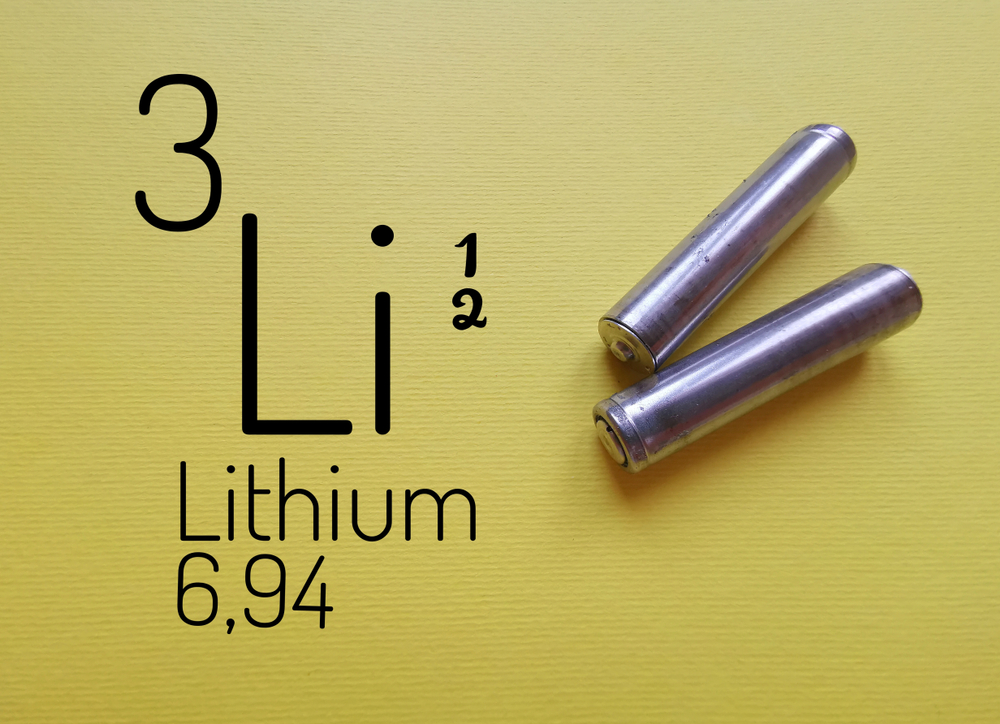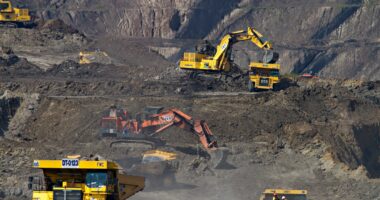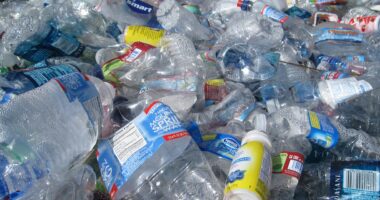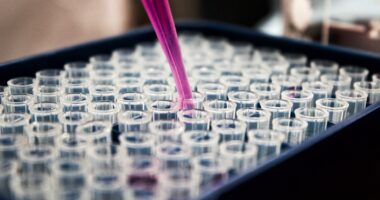Lithium is mostly mined in two ways – from brine deposits (old ocean and salt lake beds), and from hard rock deposits called spodumene pegmatite. Brine deposits in general tend to hold more lithium than the hard rock deposits, while pegmatite deposits tend to have more pure and easily processed forms of lithium than the brine deposits. With lithium demand escalating worldwide, both forms of mining will be essential to supplying the critical mineral needed for clean energy storage and use.
Chinese companies control much of the global market for lithium, both from a mining and from a processing perspective. In response, governments around the world have prioritized the development of domestic and friendly sources of lithium. Canada and the United States are no different, and they happen to be home to many potential sources for hard rock lithium. Most of these deposits are not currently being mined, but many are being actively explored.
Global distribution of hard rock lithium deposits. Source
Here we will take a look at the potential of one area in particular, Canada’s mineral-rich Abitibi region in the area of Val d’Or, Québec. Economically, the region was built on gold and silver mining, relies on copper, zinc, and lead mining, and is currently home to one of the country’s only operating lithium mines. The minerals are found in volcanic rocks, including the lithium-bearing spodumene pegmatite formations. Mining infrastructure abounds, and trained labor is not hard to find. It’s a mining-friendly jurisdiction that may represent the path of least resistance to increased lithium production in Canada.
The Existing NAL Mine
Sayona Mining Limited (ASX:SYA) (OTCQB:SYAXF) recently reopened the past producing North American Lithium (NAL) Mine in Québec. It is currently one of two operating lithium mines in Canada, and the other is owned by a Chinese company that has to this point only shipped small quantities of lithium concentrate to China. The NAL mine has a processing facility onsite, and the company produced its first saleable batch of commercial grade lithium concentrate in March, 2023. Importantly, the company is looking to maximize the productivity of its concentrator operations by processing lithium ore from other sources in the region that are yet to be permitted, including its own proposed Authier project located 30km away.
The mine reopened based on proven and probable reserves of 29.2 tonnes of ore with an average grade of 0.96% lithium. As a note of reference, hard rock lithium mines usually work with deposits in the 0.6 – 1.6% Li2O (lithium dioxide) range.
Sayona owns 75% of the NAL mine, with Piedmont Lithium Inc. (NASDAQ: PLL) (ASX:PLL) owning the remaining 25%. The mine is projected to be in operation for 27 years, though the processing of off-site ores could extend the concentrator operations there beyond that time.
The Prospects Around NAL
The NAL will need more lithium ore for processing, and immediately adjacent to the mine there are currently two exploration projects underway.
FE Battery Metals Corp. (CSE: FE) (OTCQB: FEMFF) is currently working on the company’s Augustus Property which is located directly adjacent and west of the NAL mine. Previous historic exploration at Augustus, as well as more recent geologic mapping by the Québec government, indicate the presence of both lithium-bearing pegmatites and the same geologic units that host the NAL mine at Augustus. The company has completed the re-drilling of the historic areas and is now embarking on a more comprehensive drill program with the goal of expanding the extent of the historic resource.
Results of the 2023 drill program are starting to come in. One hole cored into multiple sections of lithium mineralization, including a 17 meter section of 1.19% Li2O grade which aligns nicely to a 2021 hole, located 120 meters away, that encountered 1.17% over 19 meters. Another drill hole recorded 1.07% Li2O over 6.9 meters, while another hit 1.17% over 2 meters. A review of announced samples from 2022 reveals grades ranging from 0.93 – 1.56%. These are all promising results as FE Battery Metals moves closer to producing an NI 43-101 Technical Report which is the next step in the development of a potential resource.
Jourdan Resources Inc. (TSXV: JOR) (OTCQB: JORF) holds claims (the Vallée Lithium project) adjacent to the NAL mine to the east and the south, and is working under a joint venture with Sayona to define a viable lithium resource on those claims. The JV also involves further drilling on the NAL property itself in hopes of expanding that resource.
A review of the drilling results on the Vallée project, from 2021 and 2011, shows grades ranging from 0.88 – 1.63% with strike lengths generally in the 1 – 4 meter range. 2022 results have come in with highlights showing similar grades while the final batch of holes produced lower grades. Jourdan and Sayona are conducting an extensive drill program this year, both on NAL property and on Jourdan’s Vallée claims, so there should be further announcements regarding new hole results in the coming months.
The Upshot
In both cases (the Augustus and Vallée projects), the existing infrastructure and proximity to the NAL mine provide a potentially more direct path to mine approval (should the resource prove out) than more remote properties. Sayona is invested in maximizing the productivity of its concentrator operations, and it doesn’t get any more convenient than drawing ore from directly adjacent properties.
Considering the larger themes of lithium demand, Chinese market control, and Canadian government focus on domestic sources, investors are encouraged to monitor developments on these two intriguing properties.










